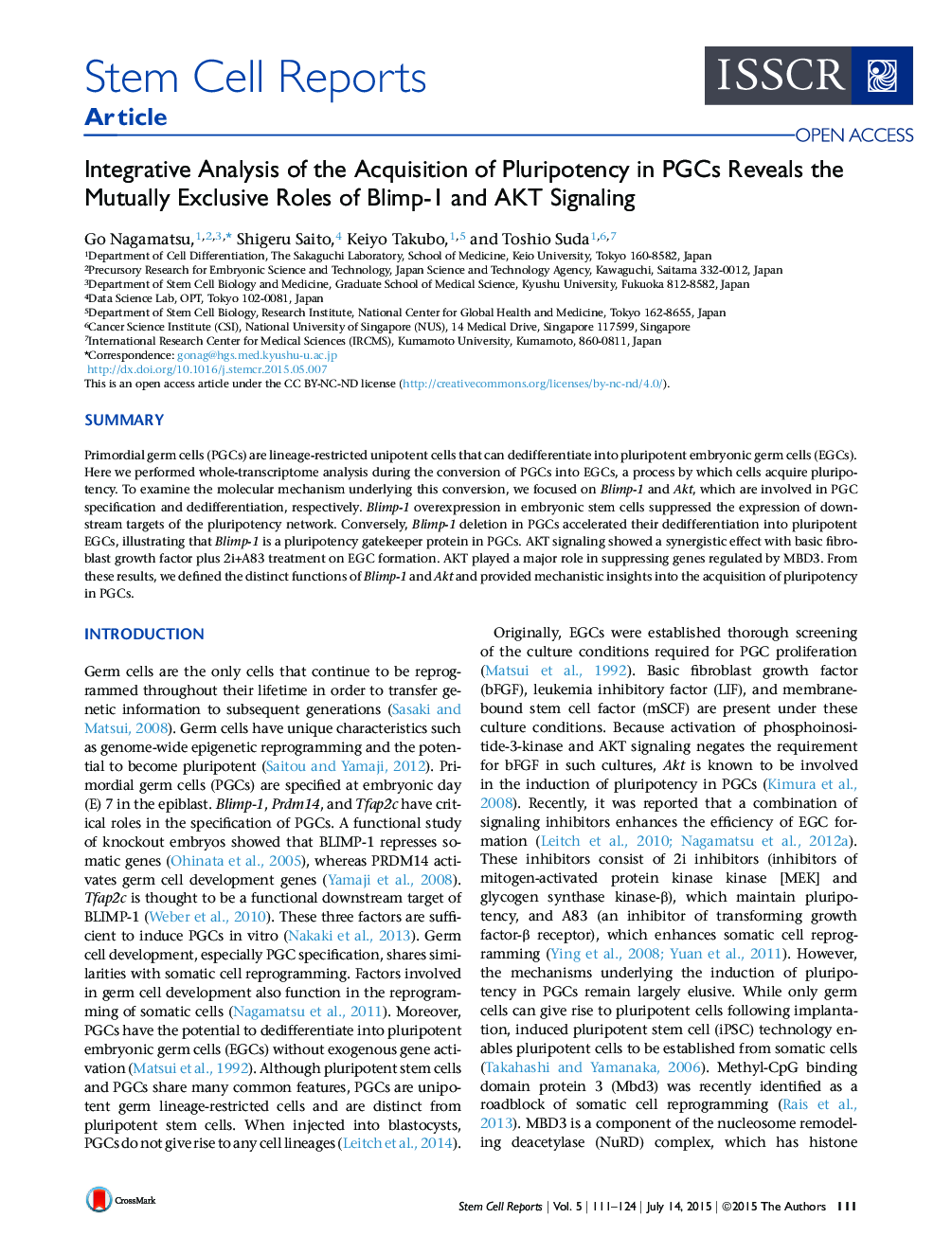| Article ID | Journal | Published Year | Pages | File Type |
|---|---|---|---|---|
| 2093498 | Stem Cell Reports | 2015 | 14 Pages |
•Time course transcriptome analysis from PGCs to EGCs revealed stepwise program•Blimp-1 suppressed pluripotency regulatory gene network through BLIMP-1 module•Blimp-1 deletion induced pluripotency in PGCs•AKT has synergistic effect with bFGF and 2i+A83 by suppressing MBD3-regulated genes
SummaryPrimordial germ cells (PGCs) are lineage-restricted unipotent cells that can dedifferentiate into pluripotent embryonic germ cells (EGCs). Here we performed whole-transcriptome analysis during the conversion of PGCs into EGCs, a process by which cells acquire pluripotency. To examine the molecular mechanism underlying this conversion, we focused on Blimp-1 and Akt, which are involved in PGC specification and dedifferentiation, respectively. Blimp-1 overexpression in embryonic stem cells suppressed the expression of downstream targets of the pluripotency network. Conversely, Blimp-1 deletion in PGCs accelerated their dedifferentiation into pluripotent EGCs, illustrating that Blimp-1 is a pluripotency gatekeeper protein in PGCs. AKT signaling showed a synergistic effect with basic fibroblast growth factor plus 2i+A83 treatment on EGC formation. AKT played a major role in suppressing genes regulated by MBD3. From these results, we defined the distinct functions of Blimp-1 and Akt and provided mechanistic insights into the acquisition of pluripotency in PGCs.
Graphical AbstractFigure optionsDownload full-size imageDownload as PowerPoint slide
